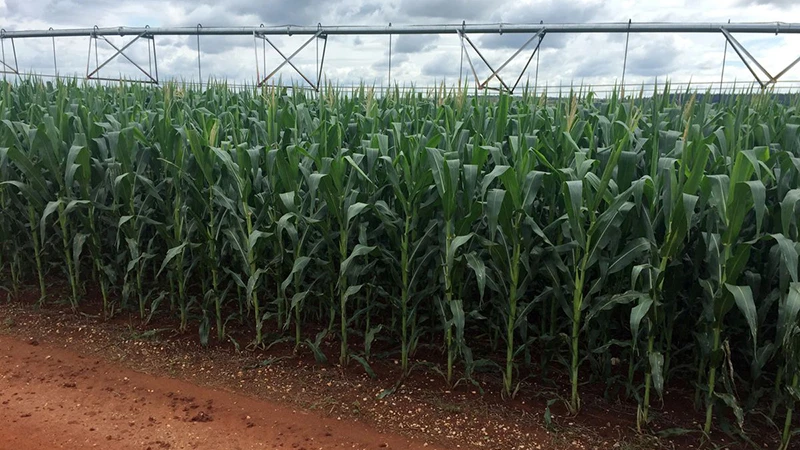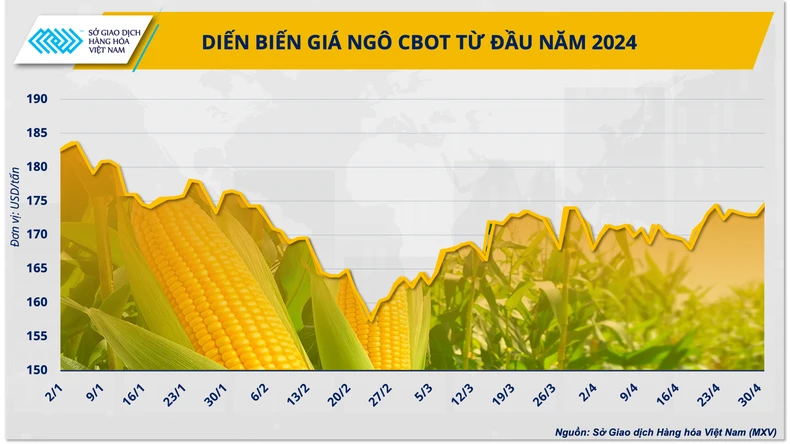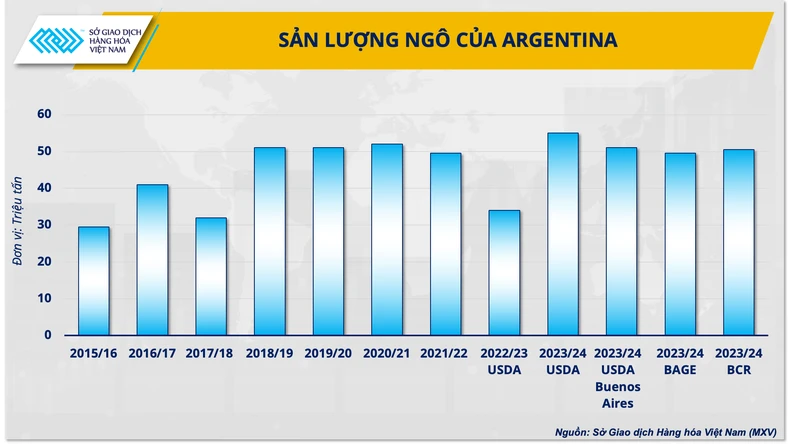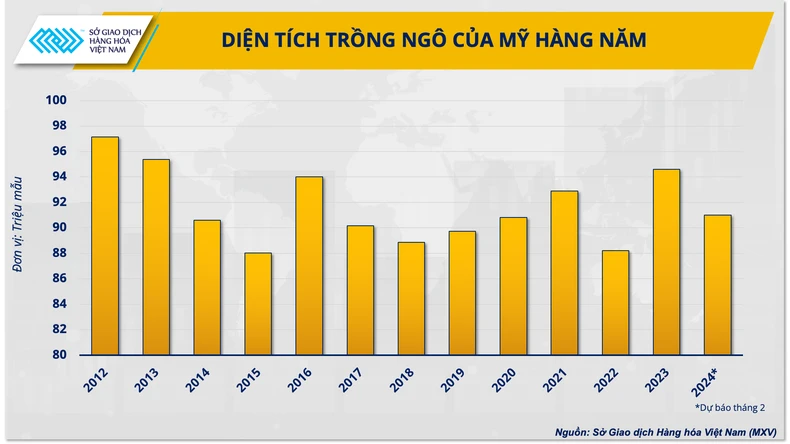Source: nhandan.vn

Illustration. (Source: Reuters)
According to the Vietnam Commodity Exchange (MXV), corn prices on the Chicago Mercantile Exchange are recording a strong recovery after a continuous downward trend since June 2023. Over the past 2 months, the price of this item has increased by 13.2%, showing that the risk of supply shortage is gradually increasing.
Besides the impact of geopolitical factors, one of the main driving forces leading to the uptrend of corn price This is because the Argentinian crop was severely affected by the epidemic.
 |
Serious loss
Table of Contents
At the beginning of this year, the animal feed ingredients market was still quite optimistic about Argentina’s crop prospects. Thanks to favorable rainfall from the El Nino weather phenomenon, the US Department of Agriculture (USDA) expects Argentina’s 2023/24 corn output to reach a record of 56 million tons, recovering strongly after a crop loss due to drought. last year. Export forecasts also reach the promised figure of 42 million tons, marking a growth of up to 66% compared to 2023.
However, the market outlook has turned upside down in recent weeks because Argentine farmers are facing new risks just as they prepare to enter the harvest period. Plants become stunted, due to the spread of leafhoppers, insects that carry harmful spiroplasma bacteria. Crop yields are likely to be significantly threatened by corn ears lacking kernels and reduced weight.
Stunt disease is not a rare phenomenon in corn or in Argentina, but this year the situation has gotten out of control. Increased humidity in the last two months has created a favorable environment for leafhoppers to spread rapidly.
In some northern provinces such as Chaco, Santiago del Estero and Tucumán, damage caused by diseases to crops is up to about 40-50%, while normally this figure is at worst only 5%.
In response to the outbreak, the Argentine government announced an acceleration of approval procedures for two pesticide products recommended to fight the disease, but this solution appears to have come too late to restore the harvest. plan this year.
The damage has not stopped
Faced with the unpredictable developments of the epidemic, analysts are starting to adjust production forecasts and crop prospects in Argentina.
In the latest report, the US Department of Agriculture branch in Buenos Aires lowered Argentina’s 2023/24 corn production forecast to only 51 million tons, lower than the 55 million tons given in the WASDE report. April due to widespread corn disease. Meanwhile, Argentina’s two largest grain exchanges, Buenos Aires (BAGE) and Rosario (BCR), also lowered their output forecasts to only 49.5 million tons and 50.5 million tons, respectively.
 |
Until now, the impact of the disease on the crop is still ongoing. Therefore, analysts’ adjustments generally cannot cover the entire loss that crops are actually suffering and will suffer.
 |
|
Mr. Pham Quang Anh, Director of Vietnam Commodity News Center. |
Mr. Pham Quang Anh, Director of Vietnam Commodity News Center said: “Because the current situation in Argentina is unprecedented, accurately estimating crop damage is relatively difficult. I think this will be an unexpected surprise that could cause corn prices to increase sharply because Argentina is an important supply market, especially for purchasing countries in Asia.”
Has corn “escaped” the price drop?
The crop in Argentina was attacked by the disease, leading to a sharp decline in export prospects. This is clearly one of the reasons why corn prices are recovering. In addition, MXV believes that the market in the coming time will also be supported for three reasons:
First, reduced supply from Argentina will be an opportunity for US corn to dominate the world market. With lower output, corn exports from Argentina this year may not be as high as expected. Customers of the world’s third largest corn exporting country may have to turn to other suppliers and the US will be one of the top choices. American farmers may step up sales activities when corn planted area is forecast to decrease this year.
 |
Second, the corn harvest period in Argentina is also forecast to not be very favorable. Heavy rains in recent weeks are disrupting crop progress. In addition, the Buenos Aires Grain Exchange said that the percentage of corn with good/excellent quality as of April 26 also decreased to only 17%, from 20% the previous week. Corn yields are expected to decline significantly due to delayed harvests, while crops are already affected by stunting disease.
Third, work wheat price The surge is also supporting corn prices. Middle East conflict Returning heat increases the risk of disruptions in global food transportation. Uncertainty causes countries to increase the need to reserve goods and tighten export activities. In the animal feed raw material market, corn and wheat are two items that can be used interchangeably. Therefore, the spike in wheat prices due to geopolitical fluctuations is also the cause of corn prices increasing.
In the current context, Mr. Quang Anh said that the decrease in supply in Argentina will leave a gap for other suppliers such as the US and Brazil. Not only that, increasing geopolitical risks globally and efforts to ensure food security by many countries may push corn prices to continue increasing in the second half of this year.
